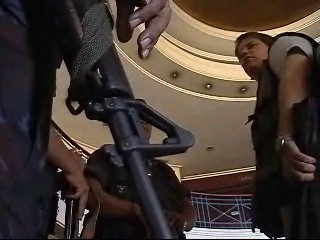No other small chain of Islands in the
Fishermen from as far away as Japan, Cambodia, and, Thailand make the run to this far off group of islets and reefs so teeming with fish and resources that at some places the fish jump into boats on their own! That's not a fish tale! I once was out in the eastern portion of this area and saw a small school of fish; perhaps being chased by another set of fish jump into our boat in the area.
For the
It is part of the first Congressional district, it is a huge maritime resource for the people of that province. It is also where around 25% of the
Beyond stories of Oil and Natural gas beneath the sands and rocks on the bottom, it is a vital area of Food Security in a dwindling ocean of supply and demand. Growing populations in the regions fishermen know it is a major area that needs protection and development.
I have been there, many times, I have heard the stories, I have seen the busted vessels and on occasion seen the evidence of the portions of it that are lawless and the presence of troops and marines from rival nations in the area are actually a welcome site for the victims of pirates and others who make their living in the rough seas and shoals.
In 1992, after tension rose in the area, over the sudden presence of Chinese prefabricated buildings on Mischief reef, And a incident that many people learned about when a group of fishermen from Padre Burgos, Quezon led by Daniel Alipustahin, were rounded up, detained and allegedly beaten up by chinese PLA Navy Seabee's who were screaming about something, a few had bloody ears. It seems some had been blast fishing and Alipustahin group was detained to check if they had been rap-tap-taping on the reef while the Chinese underwater team was in the water constructing footings for the small "fisheries" shelters on the reef.
Aliputahin, had made the report to a small coast guard detachment in the town of
I sent in a report to the people I watched the news for in
Henry's landing was perfect timing, as he flew in so did the first elements of the PAF Fifth fighter wing out of Basa Airbase, a few F-5A fighters and some other aircraft were landing.
The images were sent out to
Poof! crisis Spratly was born and people were waiting for anything. Although no one liked our reporting at the Western Command least of all the then WESCOM commander whose high blood pressure curdling screams were a major headache for his staff.
He had been given the Command assignment so he could move up the ladder to a higher post at GHQ; but no General in the post WW2 history of the Armed Forces of the Philippines assigned to the Western Command had ever lost a portion to Philippine territory before needless to say after the incident; he didn't really have a high spot on the promotions lists and retired.
The shelters have grown, the reports say lot more ships visit the area now and fishermen from
One view I found on the islands importance is summed up below other than "vast fishing grounds:"
Another is the trade flow there.
"The Spratly islands takes in the shipping traffic, that passes the Streets of Malacca, Sunda and Lambok on and represents a very important interface between the
more than a quarter of the entire shipping traffic of the world (approx. 300 big ships per day)
30 % of the world trade
48 % of the Japanese commerce as well as a high part of the merchandise of and to
70 % of the Japanese crude oil imports

No comments:
Post a Comment